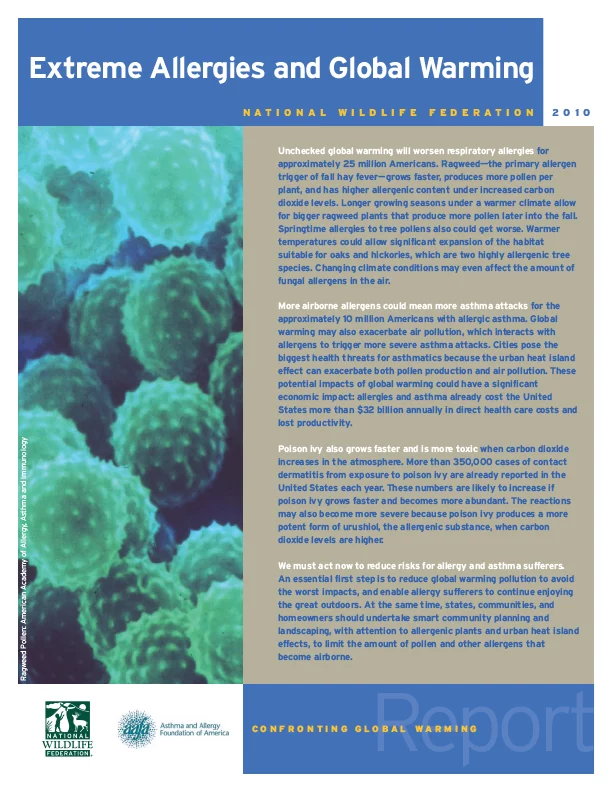Research & Reports
Climate Change and Health
In 2010, AAFA and the National Wildlife Federation created a report titled, Extreme Allergies and Climate Change, about the impact of climate change on Americans with asthma and allergies.
Does Climate Change Affect Health?
Climate change is an environmental issue. It is also a serious threat to our public health.
The government has a plan to address climate change and its health threat. Rising temperatures caused by climate change lead to longer allergy seasons and worsen air quality. Long allergy seasons can cause more allergies and asthma attacks.
Between 1995 and 2011, warmer temperatures in the U.S. have caused the pollen season to be 11 to 27 days longer. These warmer temperatures create more pollen in the air, stronger airborne allergens and more allergy symptoms.
People living with asthma and allergies can do a few things to reduce the risks and impact of climate change:
- Ask your doctor for advice on how to avoid places or situations that can cause an asthma attack or allergic reactions.
- Before leaving your home, check the Air Quality Index to see how polluted the air is in your area. This will help you protect yourself before you go outside.
- Advocate and support policy makers to act to reduce climate change and its impact on human health.
To take action against climate change, visit AAFA’s Action Network!
Download PDFs
Read the full report and see what you can do to reduce your allergy risk:
Extreme Allergies and Climate Change 
Allergy Capitals
Your location can have an impact on your seasonal allergies. AAFA’s Allergy Capitals™ report looks at the top 100 most challenging cities in the continental United States to live with seasonal pollen allergies.













